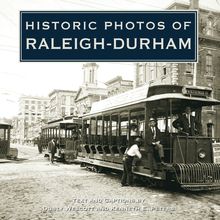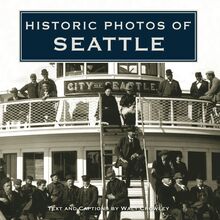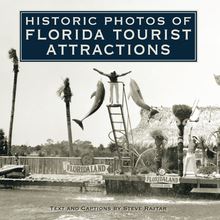Historic Photos of the Golden Gate Bridge , livre ebook
202
pages
English
Ebooks
2008
Vous pourrez modifier la taille du texte de cet ouvrage
Obtenez un accès à la bibliothèque pour le consulter en ligne En savoir plus
Découvre YouScribe en t'inscrivant gratuitement
Découvre YouScribe en t'inscrivant gratuitement
202
pages
English
Ebooks
2008
Vous pourrez modifier la taille du texte de cet ouvrage
Obtenez un accès à la bibliothèque pour le consulter en ligne En savoir plus
Publié par
Date de parution
01 juillet 2008
Nombre de lectures
0
EAN13
9781618586346
Langue
English
Poids de l'ouvrage
5 Mo
The Golden Gate Bridge is a marvel of engineering and architecture considered by many to be one of the world’s most beautiful bridges, its picturesque vistas favored by photographers, artists, visitors to San Francisco, and almost everyone else. When naysayers said it couldn’t be built, Joseph Strauss and a team of visionaries spun 80,000 miles of wire and riveted nearly 900,000 tons of steel into gossamer wings, spanning for the first time an immense gulf and linking the Pacific coast.
In black-and-white photography, Historic Photos of the Golden Gate Bridge details the history of the bridge from its design and construction to recent times. Nearly 200 rarely seen images offer a compelling look at the bridge, from the days when the treacherous currents of the Golden Gate could be crossed only by boat to the rise of the bridge as a national landmark. This book is sure to delight both those who dream of the impossible and those who live to make it happen.
Publié par
Date de parution
01 juillet 2008
Nombre de lectures
0
EAN13
9781618586346
Langue
English
Poids de l'ouvrage
5 Mo
HISTORIC PHOTOS OF
THE GOLDEN GATE BRIDGE
T EXT AND C APTIONS BY A NNE M ERRITT
Sailboats under the Golden Gate Bridge. This picture shows a calm bay. Sailing in the bay from the many marinas and yacht clubs is a popular sport in San Francisco.
HISTORIC PHOTOS OF
THE GOLDEN GATE BRIDGE
Turner Publishing Company
200 4th Avenue North Suite 950
Nashville, Tennessee 37219
(615) 255-2665
www.turnerpublishing.com
Historic Photos of the Golden Gate Bridge
Copyright 2008 Turner Publishing Company
All rights reserved.
This book or any part thereof may not be reproduced or transmitted in any form or by any means, electronic or mechanical, including photocopying, recording, or by any information storage and retrieval system, without permission in writing from the publisher.
Library of Congress Control Number: 2008901714
ISBN-13: 978-1-59652-445-3
Printed in the United States of America
09 10 11 12 13 14 15-0 9 8 7 6 5 4 3 2
C ONTENTS
A CKNOWLEDGMENTS
P REFACE
O RIGINS (1870 S -1899)
F ROM I DLE D REAM TO I NTELLIGENT D ESIGN (1900-1932)
T HE B RIDGE I S B UILT (1933-1936)
A M ARVEL OF A RCHITECTURE AND E NGINEERING (1936-1939)
A K EY TO T RANSPORTATION AND C OMMERCE (1940-1949)
R ISE OF AN I CON (1950-1960)
A CCOLADES (1960 S AND L ATER )
N OTES ON THE P HOTOGRAPHS
A view of the bridge from the western side of the south tower. The roadway was resurfaced in time for the bridge s 50th birthday in 1987. The bridge weighs 887,000 tons, 7,500 tons less than it did when new, following the installation of new decking material.
A CKNOWLEDGMENTS
This volume, Historic Photos of the Golden Gate Bridge , is the result of the cooperation and efforts of many individuals and organizations. It is with great thanks that we acknowledge the valuable contribution of the following for their generous support:
San Francisco History Center, San Francisco Public Library
The Library of Congress
To
Dana, for his support of even my craziest endeavors. Bill, Karen, and Iggy for the joy they bring to life. My family for their tolerance of the strange person they have among them .
P REFACE
The Golden Gate is not a bridge. It is the channel from the Pacific Ocean into a large bay. The channel was named by John C. Fremont, one of the most famous explorers of California. Today the bridge that spans the channel is world-famous, and most people think of the bridge, not the channel, when they hear the words Golden Gate. The channel is treacherous, narrow, and shrouded in fog many days of the year. Once through the gate, however, a very large bay opens up with good harbors and easy access to the western United States.
Most people and goods traveled to San Francisco, one of the cities founded inside the bay, by water. For many years the ferry system established inside the bay provided transport for goods and people. The need for a bridge was not perceived until the 1920s, when cars became a familiar mode of transportation for the average citizen and roads improved.
Bridging the Golden Gate, however, was a challenge that required the convergence of numerous factors. It needed an engineer willing to take on something nobody thought could be done, a community willing to vote for it, and a banker willing to finance it. All of these risks were taken, and more. Not only did Americans rise to the challenge-they did so during the Great Depression.
The Golden Gate Bridge when opened became a symbol for the American West. It was big, something never tried before, and successful. The bridge expressed the optimism and can-do attitude that people of the West brought to their daily lives. The successful completion of the bridge is a tribute to the builders and communities who made it possible.
The sun shines through clouds over the Golden Gate channel. This was the view welcoming visitors arriving by sea. Many of the forty-niners seeking gold arrived after a three-month sea voyage around South America. From San Francisco, where the prospectors could drink, gamble, and purchase provisions, the trip to gold country was a day or more north.
O RIGINS
(1870 S -1899)
What did the Golden Gate look like before the bridge was built? There are fewer and fewer people who can remember. We are lucky to have photographs not only of the famous bridge, but also of its construction and what was there before. Until gold was discovered in California, the area was better known to the native Indians, the Spanish friars who founded missions along the coast, and Russian traders who founded an outpost at Fort Ross. When John C. Fremont named the Golden Gate in 1846, he chose the name because the area reminded him of the Golden Horn near Istanbul.
In a little more than 50 years, from 1850 to 1900, San Francisco grew from an outpost into a city. The California gold rush started the growth, the end of the Civil War added more people anxious to begin a new life, and the railroads made it easier to cross the country. Then a devastating earthquake and fire in 1906 leveled the city. Showing the indomitable spirit that became the city s trademark, the citizens of San Francisco threw out its corrupt local government and rebuilt the city in less than ten years, moving forward to host the Pan Pacific Exposition in 1915, which honored the completion of the Panama Canal the year before.
A nineteenth-century view of the Golden Gate, as it appeared from the vantage point of Pacific Female College, in Oakland. The city of Oakland is located on the eastern side of the bay. From the hills when there isn t fog, the sweeping views of the bay and the Golden Gate are inspiring. Watching the sun set in a golden blaze is a wonderful ending to the day.
The Presidio Military Reservation about 1875, already 99 years old, on the southern side of the Golden Gate. The reservation was established by the Spanish in 1776, taken over by Mexico in 1822, and controlled by the United States beginning in 1848. The Presidio became part of the coastal defenses of the western United States. The Army stationed units there until the reservation became a national park at the end of the twentieth century.
Residents view a sham battle at Harbor View, on the southern side of the Golden Gate, on July 4, 1876, part of the United States centennial celebrations. A schooner loaded with explosives was floated in the bay. The guns at Fort Point fired on the schooner and at a flag on Lime Point across the channel in the Marin Headlands. It soon became apparent that the guns could not hit the ship, so an officer was dispatched to light the fuses on the explosives. Leland Stanford, who was eight years old at the time, was among the spectators and drew a picture of the battle.
Fort Point, in 1880. The fort guards the southern side of the Golden Gate channel. During the Civil War, the artillery at the fort, on the opposite shore at Lime Point in Marin County, and on Alcatraz Island in the bay, were sufficient to protect the bay from the Confederate fleet. After the war a more ambitious plan was started to include Camp Mason and Camp Reynolds on the Pacific Ocean side of the Presidio. The plan was abandoned when the technological advances in artillery adopted during the Civil War rendered the casemate forts useless.
Alvord Lake and Tunnel in Golden Gate Park, 1892. The Golden Gate Park was built by the state of California in 1870 to provide San Franciscans with green space. There were lakes, fields, even a carousel for the children in the 1,013 acres of park lands, which took the shape of a rectangle three and a half miles long and half a mile wide. The Alvord Tunnel was named for a former mayor of San Francisco and park commissioner. The tunnel leads to the children s playground. At the western end of the park closest to the ocean a windmill and beach chalet were built. The city of San Francisco took over management of the park in 1899.
Army barracks and tents at the Presidio in 1898. In addition to defending the western United States, troops bivouacked at the Presidio could be dispatched to stations in the Pacific such as the Philippines. The tents were made available to city residents after the earthquake in 1906 until permanent housing could be rebuilt. Army recruits were processed at the Presidio for service in Europe during the First World War. General John J. Pershing s wife and three children perished in a fire on the base in 1915.
The remains of San Francisco after the 1906 earthquake and fire. The Marin hills rise in the background. The quake along the San Andreas fault is estimated to have measured 8.25 on the Richter scale. It was the most powerful ever registered in the United States. The quake killed more than 300 San Franciscans as buildings, including the newly completed city hall, collapsed. The fires that followed raged for three days and destroyed 500 blocks of the city before being brought under control.
F ROM I DLE D REAM TO I NTELLIGENT D ESIGN
(1900-1932)
The beginning of the twentieth century saw a surge of building, which stemmed from the Industrial Revolution in the nineteenth. Consequently, engineering as a profession experienced a surge of interest and attracted the brightest minds. Engineers were needed to build factories and other structures. The railroad industry, whose pivotal role in opening the West is well known, employed many engineering firms to design and build the tracks, bridges, and stations needed by the trains. This need challenged engineers to build bridges that could span rivers and canyons. The wider the gulf, the bigger the challenge.
A bridge that could span the Golden Gate was a challenge daunting in its prospects. Although ferry service had begun early in the nineteenth century, the swift currents and strong winds of the strait were treacherous for all who ventured onto the waters. The channel itself reached 335 feet at its deepest point. A bridge that could connect San Francisco to Marin County, however, had long been dreame














